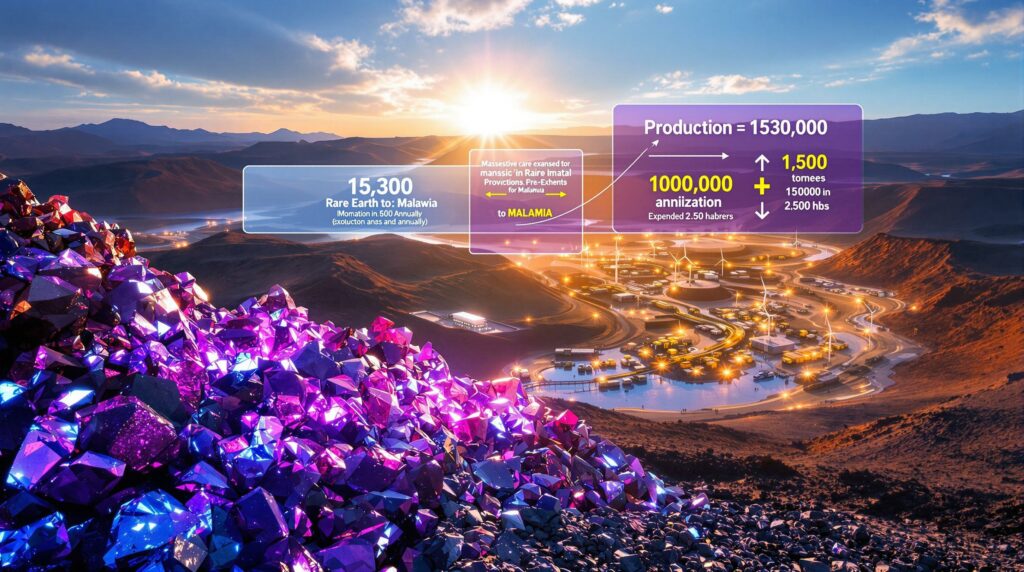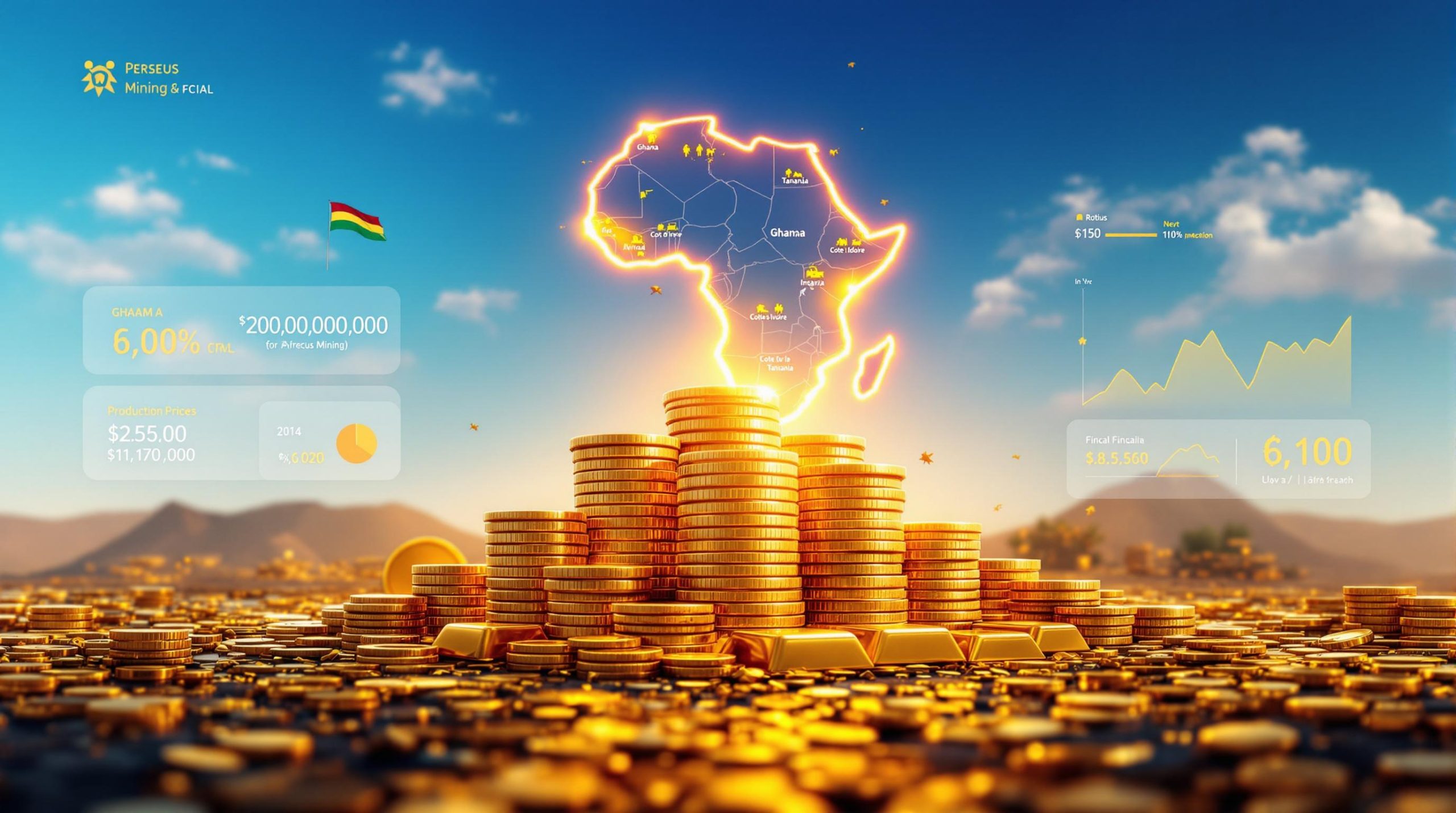How Has Lindian Resources Expanded the Kangankunde Rare Earths Project?
The expansion of Lindian Resources' Kangankunde Rare Earths Project represents a pivotal development in the global rare earths industry. With formal approval now secured for a significant increase in operational territory, this Malawi-based project is positioned to become a substantial contributor to the critical minerals energy transition supply chain outside of traditional producing regions.
What Regulatory Approval Did Lindian Resources Secure?
Key Details of the Mining License Expansion
Lindian Resources has achieved a major regulatory milestone with the formal approval from the Malawi Mining and Minerals Regulatory Authority (MMRA) to substantially expand its mining license area. The approval extends the company's Medium Scale Mining License ML0290/22 from the original 900 hectares to 2,500 hectares—representing a 177% increase in operational territory within Malawi's Balaka District.
This expansion transforms the project's scale and potential, giving Lindian control over a significantly larger portion of the mineral-rich area. The expanded license creates new opportunities for resource development while consolidating Lindian's position in this strategically important location.
Regulatory Requirements and Timeline
The MMRA's approval comes with specific conditions that Lindian must fulfill within a six-month timeframe:
- Completion of a comprehensive feasibility study covering the expanded area
- Obtaining necessary environmental clearance from the Malawi Environment Protection Authority
- Meeting all regulatory compliance standards set by Malawian authorities
As Robert Martin, Lindian Resources executive chairman, explained: "The upgrade of our Stage 2 expansion area from an exploration licence to a mining licence allows Lindian to work in parallel on our larger Stage 2 expansion whilst using the learnings from the development of our Stage 1 production facility to ensure that we optimise our processing flow sheets and recoveries."
This parallel development approach represents an intelligent strategy to accelerate the overall project timeline while applying operational insights gained from initial production to optimize later phases. Understanding mining permitting insights is crucial for appreciating the significance of this regulatory milestone.
What Makes the Kangankunde Deposit Valuable?
Exceptional Grade Profile
The Kangankunde deposit stands out in the global rare earths landscape due to its remarkable quality metrics:
- Total rare earths oxide (TREO) grade of 2.9% over the life of mine
- Enhanced 3.1% TREO grade during the first five years of production
- Production of monazite concentrate with 55% TREO content
- Low levels of deleterious elements and radionuclides, reducing processing challenges
These grade characteristics place Kangankunde among the world's premier rare earth deposits. The combination of high TREO percentages with low levels of problematic elements creates an ideal scenario for cost-effective processing and production of high-value rare earth products.
Resource Characteristics
Beyond its impressive grades, several geological factors contribute to Kangankunde's value proposition:
- The deposit features a mineral assemblage that is amenable to conventional processing techniques
- The resource demonstrates consistent mineralization across the explored areas
- The deposit's shallow depth makes it accessible with standard mining methods
- The carbonatite-hosted rare earth mineralization typically allows for simpler metallurgical recovery
These favorable characteristics translate to lower operational complexity and potentially reduced capital intensity compared to many competing rare earth projects globally.
How Will This Expansion Transform Production Capacity?
Production Scale Transformation
The license expansion enables a dramatic increase in Lindian's production potential:
- Stage One (original plan): 15,300 tonnes per annum (tpa) of monazite concentrate
- Stage Two (post-expansion): Estimated 75,000-100,000 tpa of monazite concentrate
- Represents a 5-6.5x increase in production capacity
This substantial capacity increase positions Kangankunde to become a significant global supplier of rare earth elements, potentially supplying 5-7% of global demand for certain critical rare earth elements when operating at full capacity.
Modular Development Strategy
The expanded license facilitates a more flexible operational approach:
- Phased infrastructure implementation reducing upfront capital requirements
- Modular production units that can be scaled according to market demand
- Adaptable processing strategies to optimize recovery rates and product specifications
- Concurrent development of Stage One and Stage Two, accelerating overall timeline
This modular strategy allows Lindian to balance capital efficiency with production growth, adjusting expansion pace to match market conditions and funding availability. It also reduces technical risk by allowing process optimization based on operational experience before committing to full-scale expansion.
What Strategic Partnerships Support the Project?
Iluka Resources Partnership
Lindian has secured a binding strategic partnership with Iluka Resources that covers both development stages:
- Comprehensive agreement encompassing both Stage One and Stage Two expansions
- Right of First Refusal (ROFR) mechanism for project financing and offtake
- Potential debt funding covering at least 50% of Stage Two expansion costs
- ROFR applies to maximum 25,000 dry tonnes per annum of additional concentrate
- 15-year duration for the offtake agreement, totaling 375,000 tonnes
This partnership with Iluka—an established mineral sands producer with rare earths expertise—provides validation of Kangankunde's potential while securing long-term market access for a significant portion of the project's output. Such partnerships are increasingly important in modern mining investment strategies.
Additional Offtake Interest
Beyond the Iluka agreement, Lindian has reported substantial market interest:
Robert Martin noted: "The company continues to field additional inbound enquiries and is currently working on multiple pathways for further strategic offtake and funding agreements and will update the market in due course."
This level of interest from potential offtake partners indicates:
- Strong market recognition of Kangankunde's strategic value
- Growing industrial demand for non-Chinese rare earth sources
- Potential for premium pricing for reliable, ethically-sourced rare earth products
- Opportunity to secure funding through prepayment arrangements with end-users
The combination of the Iluka partnership with additional potential offtake agreements positions Lindian to potentially secure sales contracts for most of its planned production before reaching full operational status.
What Economic Benefits Will the Expansion Bring to Malawi?
Local Development Impact
The Kangankunde expansion is expected to generate substantial socioeconomic benefits for Malawi:
- Employment creation: Hundreds of direct jobs during construction and operations
- Skills development: Training programs for local workers in modern mining techniques
- Infrastructure improvements: Road, power, and water system enhancements
- Local business opportunities: Supply chain development for goods and services
- Community development programs: Education, healthcare, and agricultural initiatives
These benefits will be particularly significant in the Balaka District, where the project is located, potentially transforming the local economy through sustainable mining-related development.
Strategic Resource Development
For Malawi as a nation, the Kangankunde project represents:
- Development of a strategic mineral resource with growing global importance
- Diversification of the national economy beyond traditional agricultural exports
- Potential to establish Malawi as a recognized player in the critical minerals sector
- Enhanced foreign direct investment profile for the country's mining sector
- Increased export revenues and tax base supporting national development priorities
Through careful development of this resource, Malawi has the opportunity to capture significantly more value from its mineral endowment than has historically been the case with many African mining projects.
What Makes This Project Significant in the Global Rare Earths Market?
Supply Chain Implications
The Kangankunde expansion comes at a critical time in the global rare earths market:
- Supply diversification imperative: Western nations seeking alternatives to Chinese supply
- Growing demand from clean energy transition: Wind turbines, EVs, energy-efficient technologies
- Geopolitical considerations: Rare earths increasingly viewed as strategic national security assets
- ESG focus: Increasing preference for responsibly-sourced rare earth materials
As one of the few major rare earth projects outside China progressing toward production, Kangankunde offers potential customers a valuable supply diversification option in a concentrated market. This is particularly important in the context of the critical raw materials transition happening globally.
Competitive Positioning
Lindian's executive chairman Robert Martin highlighted the strategic timing advantage: "This will also allow Lindian to capitalise on our ability to be the next rare earth producer to market and to capture a larger market share."
This first-mover advantage offers several potential benefits:
- Premium pricing opportunities during a period of tight supply
- Early establishment of customer relationships before competing projects enter production
- Ability to secure preferential financing terms due to strong market fundamentals
- Operational learning curve benefits compared to later entrants
The parallel development approach combining Stage One and Stage Two accelerates Lindian's path to becoming a major producer, maximizing the benefit of current favorable market conditions.
What's Next for the Kangankunde Project?
Immediate Development Priorities
With the expanded mining license secured, Lindian's focus now shifts to several critical near-term objectives:
- Feasibility study completion within the mandated six-month window
- Environmental approval process with Malawian authorities
- Finalization of additional offtake arrangements beyond the Iluka agreement
- Detailed engineering and procurement planning for both development stages
- Project financing arrangements leveraging strategic partnerships
The six-month regulatory timeline creates a clear roadmap for these priorities, with environmental approval representing a particularly important milestone for project advancement.
Long-Term Strategic Vision
Looking further ahead, Lindian's strategy appears focused on:
- Production ramp-up optimization to achieve nameplate capacity
- Recovery rate improvements through ongoing process refinement
- Product specification enhancements to maximize value realization
- Potential downstream integration into higher-value product forms
- Further resource development across the expanded license area
The modular development approach provides flexibility to adapt this long-term vision based on evolving market conditions, technological advances, and operational experience.
What Makes Rare Earth Elements Strategically Important?
Critical Applications
Rare earth elements play an essential role in numerous high-tech and green technology applications:
- Permanent magnets: Neodymium, praseodymium, dysprosium, and terbium for electric vehicles, wind turbines, industrial motors, and consumer electronics
- Catalysts: Lanthanum and cerium for petroleum refining and emissions control
- Phosphors: Europium, terbium, and yttrium for energy-efficient lighting, displays, and medical imaging
- Defense applications: Various rare earths in guidance systems, communications equipment, and weapons platforms
- Polishing compounds: Cerium for precision optics, semiconductor wafers, and display screens
These applications are expected to see significant growth over the coming decades, particularly those related to electrification and renewable energy, driving increasing demand for rare earth materials. Recent developments in critical minerals policy highlight the growing strategic importance of these resources.
Supply Chain Concerns
The global rare earths market faces several structural challenges:
- Supply concentration: China currently controls approximately 85% of global rare earth processing capacity
- Processing complexity: Separating individual rare earth elements requires specialized technical knowledge and significant capital investment
- Environmental considerations: Historical rare earth processing has created significant environmental issues in some regions
- Price volatility: The concentrated market structure has led to significant historical price fluctuations
- Strategic vulnerabilities: Supply disruptions could impact critical industrial and defense capabilities
Projects like Kangankunde that can provide alternative supply sources while adhering to high environmental and social standards represent important steps toward addressing these challenges.
Market Perspective: "The rare earths market is increasingly characterized by two parallel forces: growing demand from energy transition technologies and intensifying efforts to develop supply chains outside of traditional producing regions. Projects that can advance quickly to production while meeting stringent ESG standards are particularly well-positioned in this environment."
Further Reading and Resources
For those interested in learning more about the Kangankunde project and the broader rare earths sector, several resources provide valuable context:
- Mining Technology's coverage of "Lindian secures approval for Kangankunde Rare Earths project expansion"
- Proactive Investors' analysis of Lindian's expansion approval
- Lindian Resources' investor presentations and technical reports
- Industry analysis of the rare earths supply chain and market dynamics
- Malawi's mining sector development plans and regulatory framework
Understanding these resources can provide important context for evaluating the significance of the Kangankunde expansion in both local and global terms.
Looking for the Next Major Mineral Discovery?
Discovery Alert's proprietary Discovery IQ model helps investors identify significant ASX mineral discoveries like rare earths projects in real-time, turning complex geological data into actionable investment opportunities. Understand why major mineral discoveries can lead to exceptional returns by exploring Discovery Alert's dedicated discoveries page.




